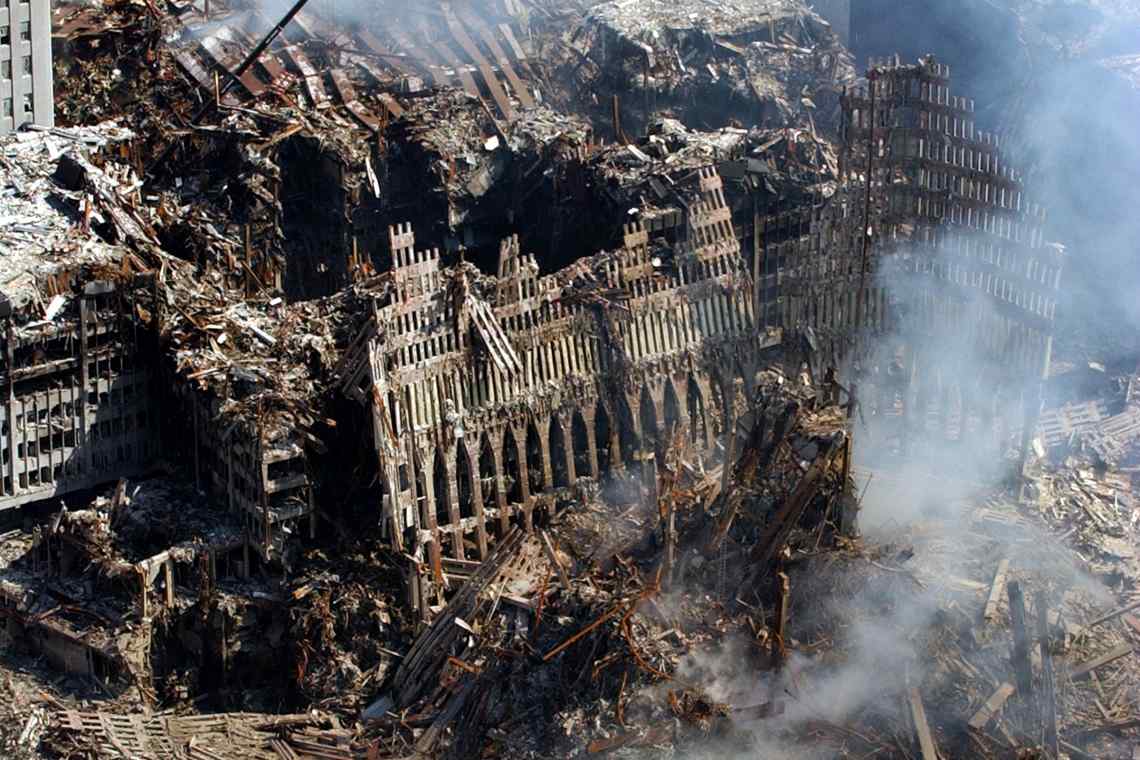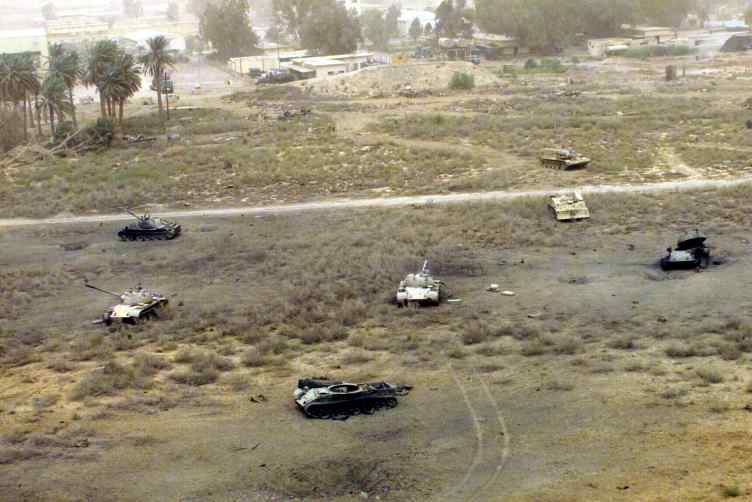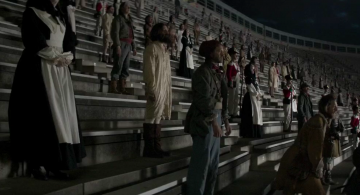The manipulation of human memory is not a new topic for discussion in film and literary studies; it deserves, however, a renewed attention in the thriving genre of memory disorder fiction. Over the past few decades, memory disturbance plots have proliferated in literature and film to include amnesia, insomnia, dissociative identity disorder, early-onset Alzheimer’s disease and other forms of dementia1. The growing interest in individuals with mental disorders can be partially explained on the grounds of the postmodern de-centering drive and shifting of emphasis to the social periphery. The very fact that people today are at a higher risk of developing a memory disorder than before also accounts for its integration in numerous fictions. In essence, the mushrooming genre of memory disorder fiction reveals many aspects of late-capitalist culture to cause mental illness, epitomized in the splintering of the postmodern subject. While providing important insights about how postmodern culture challenges human memory in everyday life, this emerging genre is nonetheless concerned with the manipulation of memory in traumatic events.
Paul Auster’s fiction is abundant with examples on memory conundrum as a culturally embedded phenomenon, beginning with his first celebrated work The New York Trilogy, comprising three stories: City of Glass (1985), Ghosts (1986) and The Locked Room (1986). As suggested by their titles, Auster’s plots display depthlessness, which, as stated by Fredric Jameson, is characteristic of postmodernity: “depth is replaced by surface, or by multiple surfaces” (1991: xii). Notwithstanding the fragmented identities surfacing in The Trilogy, Auster’s characters are all depersonalized, as reflected in the choice of their names, like White and Black in Ghosts. These shadowy figures make transparent the void within which late-capitalist culture engulfs its subjects.
In this paper, however, I venture to discuss Auster’s unprecedented invocation of memory disorders in Man in the Dark (2008). While establishing a direct relation between postmodern political conspiracy and memory conundrum, Auster also demonstrates the role of fiction in recovering memory distortion caused by personal and cultural traumas. Auster employs memory disorders as literary devices to delve into the past, bringing to public awareness the political conspiracy surrounding the collective American trauma of the 9/11 attacks and the destruction of the World Trade Center in New York.
A Postmodern Affliction
Before shifting my discussion to Auster’s novel, I find it necessary to first articulate the inherent affinity between memory conundrum and genre. Of the various forms of memory disorders, amnesia is the most prominent conceit in fiction. Amnesia involves an apparent loss of memory that necessitates a person to attempt to mentally recover, reconstruct, or even refigure the past in which the “act of fiction” (creating something) becomes enmeshed in realities and fantasies. Jonathan Lethem draws upon the amnesic nature of fiction in his “Introduction” to The Vintage Book of Amnesia, as follows: “amnesia can be seen as a basic condition for characters enmeshed in fiction’s web” (2000: xiv). Tracing back its roots in the works of Franz Kafka and Samuel Beckett, Lethem identifies two types of literary amnesia: that which appears as a metafictional reflection of absence and self-deception in human existence; and that which was reframed by Sigmund Freud’s psychoanalysis linking amnesia with the suppression of guilt (Lethem, 2000: xiv-xv). A third form of amnesia, of a particular interest for the present study, is the “political collective type”, identified by contemporary theorists like Fredric Jameson and Marshall McLuhan, to mention but a few (Lethem, 2000: xvi).
The correspondence between memory disorders and postmodernity is substantiated in the field of literary theory. Despite the controversy it has stirred among critics, ranging from dismissal to advocacy, there is little doubt that postmodernity has been omnipresent for over half a century, perhaps more forcefully in the 1980s. Still, “[t]he ‘postmodern’ […] proved not straightforwardly chronological”, as Jonathan Arac argues, but rather “partook of a more complex hermeneutical temporality” (1986: xi). With the introduction of the personal computer, as Jameson acknowledges, our notion of reality has become spatial rather than temporal (2017). The inhabitation of multiple realities has remarkably prompted the manipulation of memory and splitting of temporality. As Jean-François Lyotard also notes, the paradox of future (post) versus anterior (modo) lies at the very essence of the concept of postmodernism (1993: 15).
A reflection upon its different modes — existentialist, phenomenological2, philosophical, deconstructionist, among others — lends postmodernity an eclectic character. Literary critics seem to agree that what is conceived as the postmodern condition or psyche is contradictory to the extent of being pathological. Terry Eagleton, for example, characterizes the “postmodern individual” as “dispersed”, living in his own state of self-illusion; “decentred”, with splintered and confused identities; and “schizoid”, a state in which mental pathologies have a profound effect on how the memory functions and to what end (1988: 394-395). Fredric Jameson extends this condition to identify late-capitalist society as “schizophrenic”, separating past conditions divested of nostalgia and present conditions obsessed with enervating and destructive contradictions, as suggested in the following:
[…] the frenzy whereby virtually anything in the present is appealed for testimony as to the latter’s uniqueness and radical difference from earlier moments of human time does indeed strike one sometimes as harboring a pathology distinctively autoreferential, as though our utter forgetfulness of the past exhausted itself in the vacant but mesmerized contemplation of schizophrenic present that is incomparable virtually by definition. (1991: xii)
While Jameson’s discussion of the postmodern dualist approach of the past is justified in my reading of Auster’s Man in the Dark, his argument of the postmodern as “a ‘return of the repressedʼ of the twenties and thirties ‘without affectʼ” (xvii) does not prove to be true to all postmodern fiction3, at least not to this novel.
Adding a new twist to the intersection between postmodern culture and mental disorders, Samuel Chase Coale enhances the constructive role postmodern fiction partakes in transforming paranoia from “merely a psychological and clinical condition” into a “critical creative perspective” (2005: 5). Compatible with Coale’s reading of paranoia plots, I argue that the memory disorder fictions bring to light cultural and distinctively postmodern factors to repress memory while trying to “heal” it.
The invocation of memory disorders to convey postmodernity is not confined to a specific genre of fiction and to theory, but extends to political and historical studies. In his reflection on the latest political affairs, David Andress argues that we are bearing witness to “outbreaks of cultural dementia”, most articulate in Trump’s rhetoric of “Make America Great Again” and Brexit (2018: 10). To better grasp “the two opposing yet complementary aspects” of history, Andress suggests we compare it to individual memory. Apart from being “endless reconstructions of impressions of personal experience, with no inherent accuracy”, Andress explains that “memories are also what enables us to remain functional as individuals in society” (9-10). A similar duality applies to history in its combination of “the set of stories we tell ourselves about where we came from”, and “the information we can rely on about what actually brought us to the present day” (9). When cold facts are displaced by a desired narrative, as it is the case in Trump’s America and Brexit’s United Kingdom, collective memory falls prey to cultural dementia, which is at odds with democracy and continuing economic growth (10). That American history has been subject to manipulation by collective memory and political interests is also suggested in Auster’s novel, which identifies post-9/11 America as amnesic.
A Personal Loss
In Man in the Dark, Paul Auster’s employment of two memory disorders, insomnia and amnesia, has, among others, metafictional as well as cathartic purposes. Driven by insomniac thoughts, the protagonist, August Brill, contemplates the American wilderness and invents a story that takes an unprecedented twist to invoke the events of 9/11 — the terrorist destruction of the World Trade Center in New York City — and the subsequent American invasion of Iraq. While reflecting upon personal and collective memories, Brill is liberated from and transcends beyond the present that is haunted by past trauma while forcing the reader to join him.
The entire novel runs over the course of one night, as the 72-years-old insomniac journalist, August Brill, pushes away disturbing personal memories by inventing stories. The first and longest is about another man in the dark, whom he calls Owen Brick. Brill is staying in Vermont with his daughter, Miriam, and his granddaughter, Katya, while recovering from the recent death of his wife, Sonia, and from a car accident after which he became paralyzed and wheelchair-bound. Brill is not the only one that is mourning in the house: Miriam is engulfed in guilt after ten years of divorce; and Katya is heartbroken and spends her days mourning the tragic death of her boyfriend, Titus, who was kidnapped by terrorists and brutally slaughtered during the American invasion of Iraq.
Not only is life in the house, as pictured by the first-person narrator, governed by a mixture of loss and grief, but the resulting sense of estrangement is extended to cast a dystopic view of American history: “I am alone in the dark, turning the world around in my head as I struggle through another bout of insomnia, another white night in the great American wilderness.” (Auster, 2008: 1) As Roderick Nash brings to our attention, the American wilderness plays an important historical role in the collective American experience (1963: 3). The American attitude towards the wilderness has drastically changed over history from being destructive to becoming more appreciative and preserving. While early American settlers were very hostile towards the wilderness, 19th century American transcendentalists addressed it as “the symbol of the spiritual world and the container of moral truths which permeated the universe” (4)4.
Hence, setting the novel in the wilderness enhances its transcendental and cathartic vocations; therefore, while at home in Vermont, the narrator/author occupies a state of mind that is as free and wild as the American wilderness. On the one hand, the concept of the wilderness represents the state of mind the author inhabits to transcend the dystopic present. The wilderness has, on the other hand, an “earthly” quality, binding the author to his or her cultural and historical roots. This analogy between fiction and the wilderness thereby suggests that the former is perhaps fierce and unbound, but is nevertheless true. Richard Lea, paraphrasing the author Orhan Pamuk, illustrates this duplicity: “the paradox at the heart of fiction, the engine that drives it, is the tension between the knowledge that what you’re reading is all made up and the overwhelming feeling that it’s all true” (Lea, 2012). Helen Scheuerer puts this paradox differently, by suggesting that memory is to fiction what fiction is to memory, meaning that both individual memories and fictive plots merge real events with personal impressions (Scheuerer, s.d.).
To further advance this cathartic journey in the American wilderness while still being physically encumbered, Brill is affected by insomnia, which becomes a catalyst for manipulating memory and writing fiction, as suggested in the following:
The night is still young, and as I lie here in bed looking up into the darkness, a darkness so black that the ceiling is invisible, I begin to remember the story I started last night. That’s what I do when sleep refuses to come. I lie in bed and tell myself stories. They might not add up to much, but as long as I’m inside them, they prevent me from thinking about the things I would prefer to forget5. (Auster, 2008: 2)
This passage draws upon the amnesic nature of fiction that embodies, as Richard Lea notes, the author’s struggle with time and keeping of the past (2012). Even though the narrator/author is making it seem as if his character alone is a victim to this amnesic process, the readers are gradually involved in this fallacy that manipulates their memory and immerses them into the fictional world. While repeatedly making the novel meta-fictive, the narrator/author more concretely displays the process of writing fiction:
I put him in a hole. That felt like a good start, a promising way to get things going […]. I’m talking about a deep hole in the ground, […] dug in such a way as to form a perfect circle, with sheer inner walls of dense tightly packed earth, so hard that the surfaces have the texture of baked clay, perhaps even glass. In other words, the man in the hole will be unable to extricate himself from the hole once he opens his eyes. (3)
Once again, the narrator/author implies the amnesic nature of fiction as the characters are, to use Jonathan Lethem’s words, “enmeshed in fiction’s web” (2000: xiv). The fact that the real author of this book, Paul Auster, is both aware of his enmeshment in the fictional world and of his fictive author state, marks this plot as clearly postmodern. Writing fiction is compared to giving birth — an act of creation through which the author manipulates his/her memory and, quite laboriously, defeats time as he/she transmits his/her genes through the body of fiction to future generations. As soon as it sees light, which implies the process of publication, fiction is subject to scrutiny and interpretation. While pointing to the idiosyncrasy of a text, which is an incarnation of abstract ideas into a body of literature, this birth-like metaphor nonetheless acknowledges the fact that every story must still inherit certain characteristics to be identified as a work of fiction. An additional implication to this metaphor is presenting fiction as a source of enlightenment; in his/her configuration of the past, the author illuminates new perspectives about memories that were distorted or repressed by society. This novel is yet to fulfill this role by eliciting a new understanding of the tragedy of the 9/11 attacks.
From this point onward, the novel shifts alternately between the two plots: one about Brill, the second about his invented figure, Brick. Parodying the way individual memory operates, the narrative henceforth shifts between the two plots without the use of titles or chapters, suggesting a relentless flow. Likewise, the absence of quotation marks throughout the novel contributes to this flow, making it equally difficult to distinguish who is saying what to whom. Nonetheless the shifting back and forth between the two worlds, one that is “real” and another that is “fake”, echoes the double selves the postmodern individual has split into in order to participate simultaneously in the real and the virtual world.
The motif of the doppelganger, which is characteristic of Auster’s fiction, is henceforth enacted, as Brick and Brill seem uncannily alike. The story Brill unfolds about Brick bears a lot of resemblance to his life, thus manipulating memory to refigure the past without feeling vulnerable. The most obvious parallel is that Brick also feels entrapped, in the dark, while in the heart of the American wilderness: “Until now, all has been quiet around him, suggesting that he is in some remote, unpopulated stretch of countryside, with no sounds other than an occasional bird cry and rustling of the wind” (2008: 5). Brill projects his sense of entrapment to Brick, who is neither capable of figuring out his current position nor identifying his true identity. Apparently suffering from amnesia, Brick has to examine his identity card to say that he is “approaching thirty […] married to a woman named Flora and that for the past seven years he has worked as a professional magician […] performing […] under the name of the Great Zavello” (4-5). The identification of Brick as a magician is quite similar to Brill as an author: they both master the art of deception, either through gestures or words.
A Political Subtext
Apart from the overt similarities between the doubles, Brill’s anxieties about the war and his repressed sexual desires are more subtly woven into Brick’s narrative. While trapped in a hole, Brick, dressed as soldier, hears the sounds of machine guns and artillery fire that erupt in the distance, indicating that “this is a war […] and he is a soldier in that war” (5). Once extricated from his entrapment with the help of his sergeant, Serge Tobak, Brick is addressed as a soldier and ordered to assassinate the man who “owns the war” (10). Unless he accomplishes this task, Brick cannot return to his previous life. The fact that Brick is supposedly a soldier reflects Brill’s repressed anxieties about becoming one. Saved by a false diagnosis, Brill was not recruited into the army, but he is now enduring that experience through his fictional character. Cunningly, the man that Brick is supposed to kill is Brill himself, which is another indication of the conflict confronted by the author, while he simultaneously inhabits double worlds. The fact that Brick and Brill are doubles is also conveyed in the choice of their alliterative names.
While the story about Brick primarily deals with Brill’s personal loss, the part about war adds a political twist to the novel. Experiencing war in a similar fashion to experiencing a personal loss crucially blurs one’s ability to distinguish facts from illusions. Individual memory is more susceptible, however, to collective dissonance in wartime as a result of political propaganda. The conflict that emerges during wars between individual and collective memories is explicit in the novel when Brick’s memory of America is not contingent with the collective one. While he assumes that America is at war with Iraq, everyone Brick encounters, beginning with Tobak, informs him otherwise. He is continuously informed that “America is fighting America” (8), causing massive destruction and the death of “more than thirteen million” American citizens (10).
That the historical war against Iraq taking place in 2001 is twisted with an imagined second American civil war implies that the former is no more than a scenario that could have been avoided. As Lou Frisk, who is assigned to fetch Brick to commit the assassination, tells him:
There’s no single reality, Corporal. There are many realities. There’s no single world. There are many worlds, and they all run parallel to one another, worlds and anti-worlds, worlds and shadow-worlds, and each world is dreamed or imagined or written by someone in another world. Each world is the creation of the mind. (69)
As such, history too is subject to manipulation and can be refigured through the workings of memory and fiction. That fiction can reshape past memories lies in the very fact that the “hole/womb” metaphor can be interpreted in two complementary yet contradictory ways. With the mentioning of war, the “hole”, which was previously associated with the act of creation, becomes a direct allusion to ground zero — the remnant void after the destruction of the World Trade Center in New York.
Having established a solid basis for the cathartic aspect of fiction, Auster does not hesitate to suggest a different understanding of the historical trauma of the 9/11 attacks. By delving into the wilderness, which among other things, represents the American collective psyche, Auster unearths the political unconscious that was repressed and manipulated based on the interests of the Bush administration at the time. The novel further suggests that Iraq was a displacement of a repressed collective American fear of a second secession war. This controversial idea was previously supported by critics, such as Markus Heinrich, who claims that one of the unofficial reasons for the US invasion of Iraq in 2003 is that America found in Iraq a “visible enemy”, which could nonetheless manifest its “military might” (Heinrich, 2015).
If the war scenario releases Brill’s tension from a war he was better off not fighting, the chance encounter with Virginia Blaine, whom he used to have a crush on as a teenager, releases his repressed libidinal desires. When Brick meets Blaine, the two have feelings towards one another, which develop into a sexual affair. As soon as this happens, however, the two are shot dead. Considering Brill’s original intention for inventing Brick’s story, the encounter with Blaine does not seem that coincidental. Throughout the night, Brill was trying desperately to avoid remembering the dead Sonia, but his longing for her, as a wife and sexual partner, could no longer be repressed: “I’m blathering on, letting my thoughts fly helter-skelter to keep Sonia at bay, but in spite of my efforts, she’s still there, the ever-present absent one […].” (Auster, 2008: 102) Hence, the manipulation of memory within fiction is an attempt to “heal” the past rather than deny it; unless Brill stops avoiding Sonia’s memory, he will never be able to function in the present.
Brick is a different story, however; his death seems inevitable if Brill wishes to stay alive. In fact, Brill still has one more projection to cast upon Brick before “killing” him, as implied in the following assertion: “Brick is approaching his thirtieth birthday, and not once in his life he ever thought of killing himself. Now it has become his sole preoccupation.” (107) After dealing with Eros, Brill has yet to defeat Thanatos, represented in the double figure, to conclude this therapeutic fictional journey. Brill suddenly interferes in the plot and kills his fictive character:
Brick raises his hands in a gesture of surrender, but it doesn’t do him any good. The first bullet hits him in the leg, and he falls down, […] a second bullet goes straight through his right eye and out the back of his head. And that is the end of Owen Brick […]. (118)
Brill justifies Brick’s murder on the grounds that the current story is about war, which inevitably leads to a “brutal outcome” (118). While this is very unlikely, it rather seems that Brill can finally return to himself now that he has challenged his worst fears and wildest desires.
A Means to Cope
For the purposes of conclusion, let’s discuss briefly the title of the novel. Man in the Dark is about the story of a protagonist who literally lies in the dark, trying to forget some memories and remembering others. It is nonetheless a metaphysical reflection upon the human condition, doomed in a state of oblivion, unsure of what lies ahead. It is, furthermore, the state of the reader, who experiences fictional amnesia while imagining the world in a given plot. The final state alluded to in the title is that of the American individual, who is doomed to fight wars that are morally and politically ambiguous. While in fiction, as in life, memory conundrum is often a source of dystopia, its invocation as a literary device in Man in the Dark does not only help come to terms with a fragmented present, but it also provides the means to transcend it.
- 1. A few cinematic examples are David Fincher’s Fight Club (1999), Christopher Nolan’s Memento (2000) and Insomnia (2002), and Richard Glatzer and Wash Westmoreland’s Still Alice (2014). Some literary examples are Thomas Pynchon’s Inherent Vice (2009) and Matthew Thomas’ We Are Not Ourselves (2014).
- 2. The existentialist and phenomenological aspects of postmodernism have been explored by William Spanos in his article “The Detective and the Boundary: Some Notes on The Postmodern Literary Imagination” (1972).
- 3. Another example from the genre of memory disorder fiction is Matthew Thomas’ We Are Not Ourselves (2014), introducing a case of early-onset Alzheimer’s disease as an aftermath of a cross-generation cultural shock. The narrative takes us back through the history of some Irish families settling in America to draw out, neither nostalgically nor indifferently, the connection between past traumas and present disorder.
- 4. Among the most distinguished American transcendentalists is Ralph Waldo Emerson, who sought nature to meet God and reach the “oversoul” (Nash, 1963: 4).
- 5. My emphasis.












